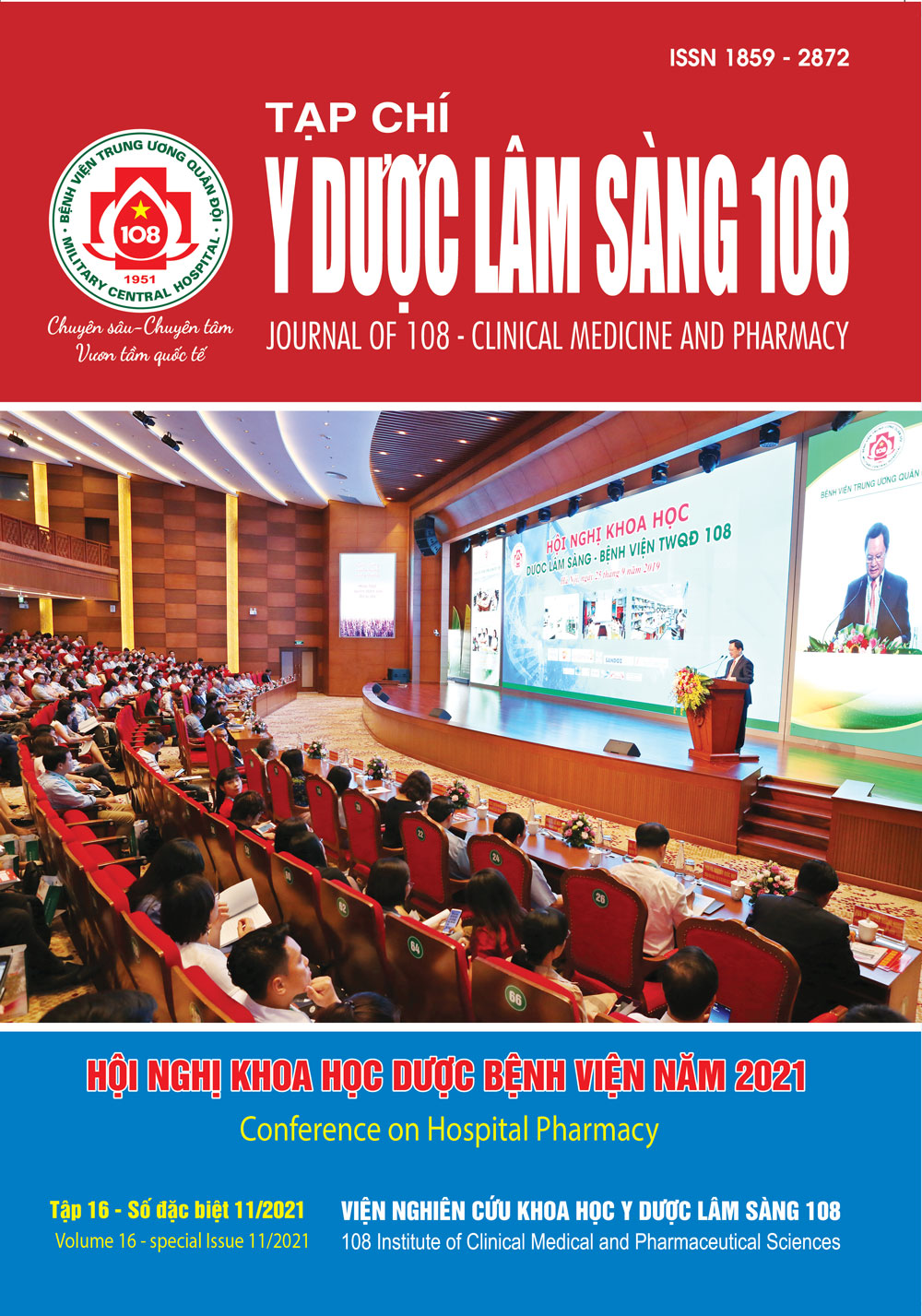The real situation of using antimicrobials in treatment for Gram-negative bacteremia at 108 Military Central Hospital in 2020
Main Article Content
Keywords
Abstract
Objective: To describe antimicrobial susceptibility pattern and antibiotic regimens among patients with Gram-negative bacteremia at 108 Military Central Hospital in 2020. Subject and method: A retrospective cohort study used data from electronic medical records of patients with blood cultures positive for Gram-negative bacteria in 2020. Result: 155 patients were included in the study. The most common pathogens were E. coli (47.1%), K. pneumoniae (28.7%). The rate of MDR, XDR and PDR were 56.7%, 15.9% and 2.5%; respectively. The high rate of using empiric therapy based on BL/BLI or carbapenem was accorded with the high percentage of multi-resistant bacteria (over 70%). Fluoroquinolone was the most common antibiotic chosen in the empiric and definite combination regimens, while the rate of sensitive bacteria with this antibiotic group was quite low (less than 50%). The proportion of patients with isolated pathogens susceptible to empirical and definitive therapy were 51.0% and 63.1%, respectively. Conclusion: The study has shown several outstanding clinical and microbiology characteristics as well as the pattern of antibiotic use in patients with Gram-negative bacteremia. This will be very important to develop several guidelines for the management of sepsis as well as carrying out relevant clinical pharmacy activities.
Article Details
References
2. Arjen MD, Martin WD et al (2019) Sepsis management in resource-limited settings. Springer.
3. Dat VQ, Vu HN et al (2017) Bacterial bloodstream infections in a tertiary infectious diseases hospital in Northern Vietnam: Aetiology, drug resistance, and treatment outcome. BMC Infect Dis 17(1): 493.
4. Fujii M, Karumai T et al (2020) Pharmacokinetic and pharmacodynamic considerations in antimicrobial therapy for sepsis. Expert Opin Drug Metab Toxicol 16(5): 415-430.
5. Guan X He L et al (2016) Laboratory diagnosis, clinical management and infection control of the infections caused by extensively drug-resistant Gram-negative bacilli: A Chinese consensus statement. Clin Microbiol Infect, 22(1): 15-25.
6. Johansson M, Phuong DM et al (2011) Need for improved antimicrobial and infection control stewardship in Vietnamese intensive care units. Trop Med Int Health 16(6): 737-743.
7. Kaye KS, Pogue JM (2015) Infections caused by resistant gram-negative bacteria: Epidemiology and management. Pharmacotherapy 35(10): 949-962.
8. Magiorakos AP, Srinivasan A et al (2012) Multidrug-resistant, extensively drug-resistant and pandrug-resistant bacteria: an international expert proposal for interim standard definitions for acquired resistance. Clin Microbiol Infect 18(3): 268-281.
9. Pranita DT, Samuel LA et al (2020) Infectious diseases society of america antimicrobial resistant treatment guidance: Gram-negative bacterial infections. Infectious Diseases Society of America (IDSA).
 ISSN: 1859 - 2872
ISSN: 1859 - 2872
